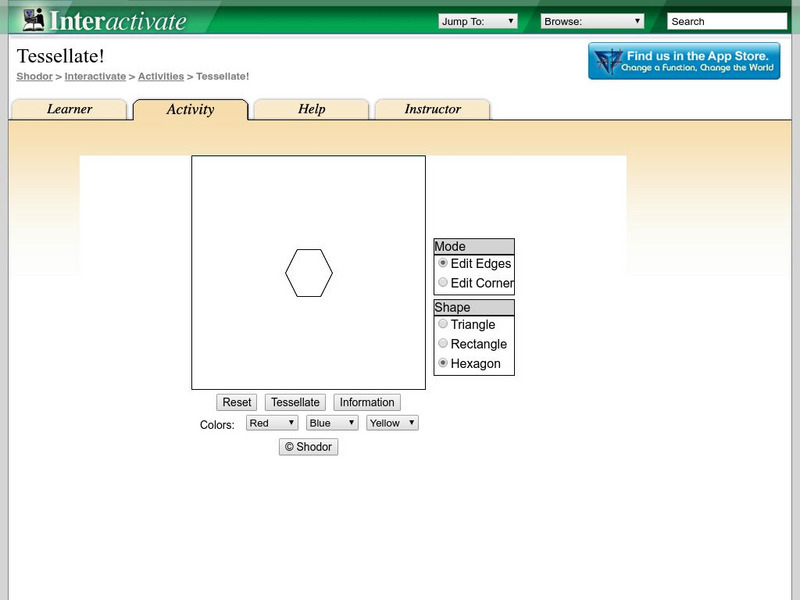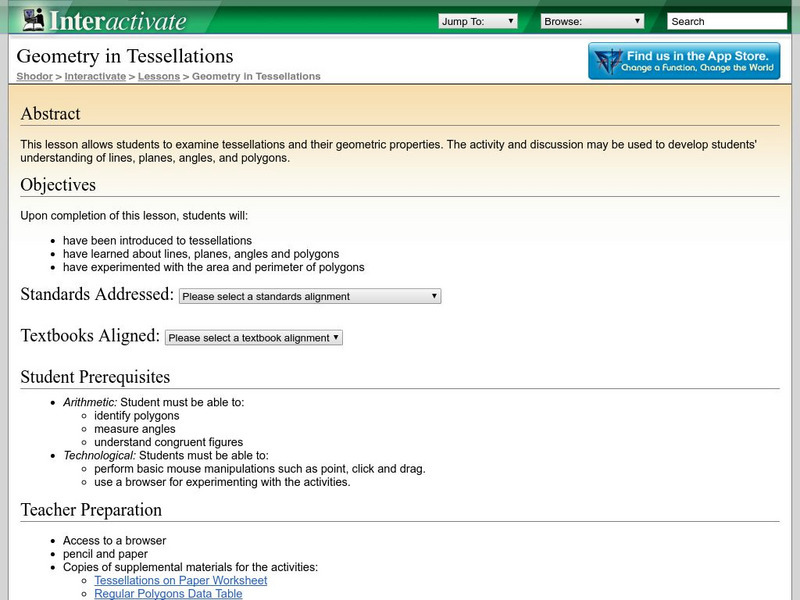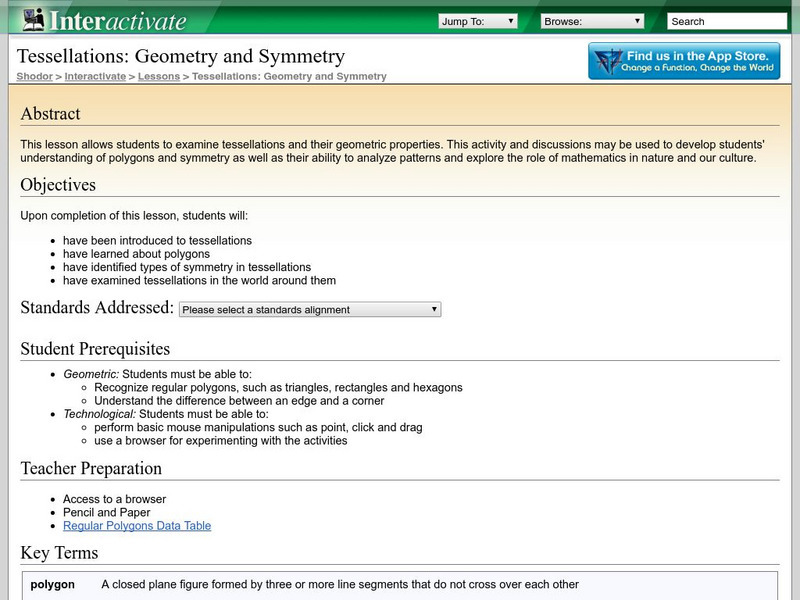Beyond Benign
Scale the Wall
How can you fit an entire school on one sheet of paper? You use scale! Scholars measure rooms in the school and, using the correct scale, design a floor plan that includes area calculations with their data.
Beyond Benign
Drafting Bubbles
Let's start designing a house. Future architects create floor plans for a house given certain constraints. They calculate the area of each room in the house. This is the 11th lesson in a 15-part unit.
Teach Engineering
New Perspectives: Two-Axis Rotation
Two-axis rotations ... twice the fun as one-axis rotations! The last installment of a five-part module teaches scholars how to conduct two-axis rotations. They create isometric drawings before and after the rotations.
Teach Engineering
Let's Take a Spin: One-Axis Rotation
Investigate the effect of one-axis rotations on geometric figures. Scholars learn to use snap cubes and the right-hand rule to draw figures after rotations about the x-, y-, or z-axes. They try their hands at examples created by the...
Teach Engineering
Seeing All Sides: Orthographic Drawing
How can your draw three-dimensional figures on paper? The lesson shows pupils how to draw orthographic projections of three-dimensional figures composed of cubes. After viewing a PowerPoint presentation, they practice this skill with...
Teach Engineering
Connect the Dots: Isometric Drawing and Coded Plans
Individuals discover how to draw cubes on triangle-dot paper. They use cubes to build structures and draw corresponding isometric drawings on dot paper in the second lesson of the series of five. The activity also introduces the concept...
Teach Engineering
Let's Learn About Spatial Viz!
Can you see your class working on spatial visualization? The first installment of a five-part module introduces the concept of spatial visualization and provides a 12-question diagnostic assessment to test spatial visualization skills....
Noyce Foundation
Piece it Together
Score some problems all related to soccer balls. The first few problems focus on pattern blocks to see relationships between figures. More advanced problems focus on actual soccer balls, the patterns on the balls, and their volumes and...
Noyce Foundation
Lyle's Triangles
Try five problems on triangles. Levels A and B focus on shapes that can be created from right triangles. Level C touches upon the relationship between the area of a six-pointed star and the area of each triangle of which it is composed....
Noyce Foundation
Cubism
If cubism were a religion, would you follow it? Lower-level tasks focus primarily on counting the number cubes in a structure and relating the number to surface area. As learners progress to higher-level tasks, isometric drawings and...
Association of American Geographers
Project GeoSTART
Investigate the fascinating, yet terrifying phenomenon of hurricanes from the safety of your classroom using this earth science unit. Focusing on developing young scientists' spacial thinking skills, these lessons engage...
Resources for Early Childhood
Making Math Meaningful and Enjoyable
Your young learners will enjoy mathematics that is meaningful correspondence as they play their way to a deep mathematical foundation. Organized around the math standards, this appropriate sequence of conceptual, preschool...
Curated OER
Network This
Students determine the number of paths in a network with up to six vertices. They construct a network to solve a problem situation. They describe and defend the solution to a network problem.
Curated OER
Imaginary Spaces: Designing a Play Space
Learners apply their enthusiasm for imaginary play to create their own imaginary play space. For this novice architectural design lesson, students arrange and glue pre-cut foam shapes to a cardboard base to set up their play space. In...
National Council of Teachers of Mathematics
The Math Forum: The Cylinder Problem: Elementary Lesson
Use this lesson plan to help students learn about cylinders. Students will be creating cylinders, and comparing them and their capacity. This engaging, hands-on lesson will hold student interest and be very beneficial to student learning.
National Council of Teachers of Mathematics
The Math Forum: The Cylinder Problem: Middle School Lesson
This lesson offers an interesting, hands-on experience for middle school students studying cylinders. Students will create cylinders, and measure and compare their volumes.
Queen's Printer for Ontario
E workshop.on.ca: Effective Instr in Math, K 3: Geometry & Spatial Sense [Pdf]
This 455-page guide outlines and illustrates effective strategies for teaching geometry and related spatial concepts to children in kindergarten through grade 3.
University of Cambridge
University of Cambridge: Nrich: Instant Insanity
Excellent interactive challenge working with cube nets to stack them in a specific order. Manipulate the cubes online to solve the problem.
University of Cambridge
University of Cambridge: Nrich: Up and Down Stairs
Work with this cube problem and see if you can find a pattern. Then you can check your solution with solutions already submitted.
National Council of Teachers of Mathematics
The Math Forum: The Cylinder Problem: High School Lesson
Using an engaging approach, this lesson requires students to record the volume of cylinders as a function of the radius. Students will construct and measure the volume of several cylinders and then begin comparing these shapes.
Shodor Education Foundation
Shodor Interactivate: Lesson: Translations, Reflections, and Rotations
This upper elementary and middle school lesson plan introduces a variety of motion geometry concepts such as translations, reflections, and rotations. Lots of interactive support for young scholars.
Shodor Education Foundation
Shodor Interactivate: Tessellate!
This creative applet allows you to tessellate variations you create starting with either a triangle, rectangle or hexagon. Directions are only a click away.
Shodor Education Foundation
Shodor Interactivate: Lesson: Geometry in Tessellations
This upper elementary and middle school lesson plan explores tessellations and their geometric properties. Plenty of interactive support is available for students. Lots of resources for teachers to use.
Shodor Education Foundation
Shodor Interactivate: Lesson: Tessellations Geometry and Symmetry
This lesson plan deals with tessellations and their geometric concepts. Upper elementary and middle school students will also explore polygons, symmetry, analyze patterns and explore the role of mathematics in nature and culture.


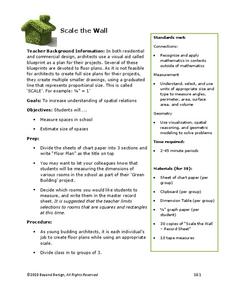













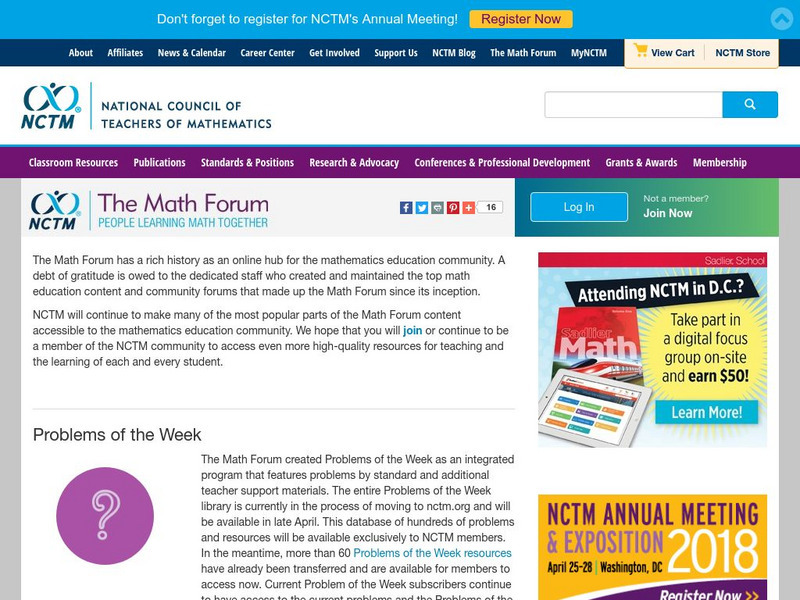

![E workshop.on.ca: Effective Instr in Math, K 3: Geometry & Spatial Sense [Pdf] Professional Doc E workshop.on.ca: Effective Instr in Math, K 3: Geometry & Spatial Sense [Pdf] Professional Doc](https://d15y2dacu3jp90.cloudfront.net/images/attachment_defaults/resource/large/FPO-knovation.png)




